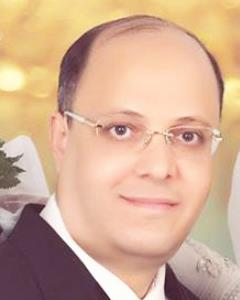Prof. Xi Xie National-Level Talent Sun Yat-sen University, China |
Biography:
Professor Xi Xie is a Professor and Doctoral Supervisor at Sun Yat-sen University, a recipient of the National Science Fund for Distinguished Young Scholars, and a leading researcher in the field of intelligent biosensing. Professor Xie earned his bachelor's degree from Sun Yat-sen University and his Ph.D. from Stanford University, USA. He subsequently conducted postdoctoral research at the Langer Lab at the Massachusetts Institute of Technology (MIT).
He leads a multidisciplinary research team dedicated to developing high-performance, multifunctional minimally invasive biosensing chips and circuit systems (Bio-MEMS), providing critical technological support for the next generation of high-precision biological research instruments and wearable smart devices. He has published over 100 papers in total, including more than 60 as the corresponding author in prestigious journals such as Nature Materials (2025), Nature Nanotechnology, Nature Communications, Science Advances, Nature Protocols, and Nature Reviews Materials.
He was selected as one of the MIT Technology Review’s "Innovators Under 35" in China for "integrating photoelectric sensing technology with biomedical science to provide cutting-edge tools for biological research and medical diagnosis." He also serves as an Associate Editor for Microsystems & Nanoengineering (Nature Publishing Group, SCI Q1, a leading journal in China's "Action Plan for Excellence in Science and Technology Research").
 |
Prof. Zuqing Zhu University of Mauritius, Mauritius |
Biography:
Mohamad Fawzi Mahomoodally holds a life sciences degree and is a Harvard University alumnus. He is an extraordinary professor for the Centre of Excellence for Pharmaceutical Sciences at North-West University in South Africa. He is also a visiting professor (China and Vietnam). He was the head of department, TWAS-ROSSA Young Affiliate, member of the Global Young Academy, recipient of the Young Promising Scientist from Mauritius to TWAS/BVA.NXT Biovision 2012, and an ASM Leadership fellow in the USA (2013). He was among the top 25 Young Scientists to attend the ‘Food Future-ICSU meeting in Italy, was nominated as a Young Ambassador member of the Young Leader’s Circle, and Country Ambassador to the American Society for Microbiology. He has authored more than 474 scientific publications and is the recipient of more than 50 fellowships and travel grants. He has also been invited as a plenary and keynote speaker to attend and present in international conferences and seminars. He was invited to ASM-GM (Boston, USA), the ICAAC meeting (Colorado, USA), and 6 strategic meetings in Washington, USA. He was invited to the Commonwealth Conference in Bangalore by the Royal Society, UK, and the Young Leader session with Nobel Laureates at the STS Forum, Kyoto/Japan. He is a Fellow of the African Science Leadership Programme, University of Pretoria-South Africa, and fellow of the Novartis Scholarship in 2017. Fawzi is presently the Principal Investigator/co-PI of 10 research grants/interdisciplinary consortium both regionally and internationally. He has organized and instructed more than 25 international and national workshops and training courses. Fawzi is the scientific editor, reviewer, and book proposal evaluator of more than 100 peer-reviewed international scientific journals, and served on or chaired more than 50 national and international committees.
 |
 Prof. Ahmed El Hashash The University of North Carolina System, USA |
Biography:
Professor Ahmed Hashash has completed his PhD from Manchester University, Uk. He wasa fellow of the California institute of Regenerative Medicine (ClRM) and New YorkUniversity Medical school (MSSM), USA. Prof. Ahmed Hashash worked as a seniorbiomedical research scientist at Mount Sinai school of Medicine of New York University andChildren's Hospital Los Angeles. He was Assistant Professor and Principal investigator ofStem Cell & Regenerative Medicine at School of Medicine University of California, UsA. inAugust 2022, Prof. Hashash has joined Texas A&M University as Associate Professor ofBiomedicine/ Biology, From Jan 2017 to June 2022, Prof. Hashash joined the University ofEdinburgh (UK)-Zhejiang Univ, joint institute of Biomedicine (now known as ZJU-UoEInstitute), as Associate Professor of Biomedicine. Prof. Hashash has several studies andpublications on the genes enzymes that control stem cell behavior and regenerativemedicine. He has published more than 34 papers in reputed interational journals andserving as an editorial board member of repute, in addition to over 17 book chapters. Prof.Hashash has received several international awards and recognitions over the years,including being the nominee for Kuwait Foundation for the Advancement of science's(KFAS) Prize in Applied Medical sciences, and Manchester University Fellowship Award (Uk).In, addiction, Prof, Hashash acts as a discussion leader at the prestigious Gordon ResearchSeminar/ Conference in USA, and a Peer Reviewer and International Extramural Review forThe Medical Research Council (MRc) grant applications, London, Uk. He is invited to speakat several international conferences in UsA, Spain, Greece, Egypt, india, and china. He is theeditor or author of over 10 books on stem cell and regenerative medicine that have beenpublished by the prestigious publisher Elsevier and Springer. Prof. Hashash is currentlyBook Series Editor at Elsevier publisher, UsA (2019-2028).


